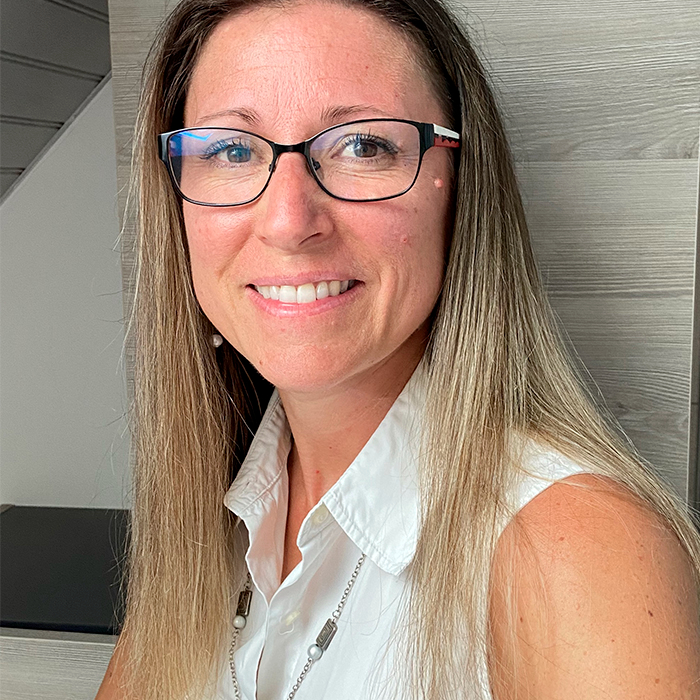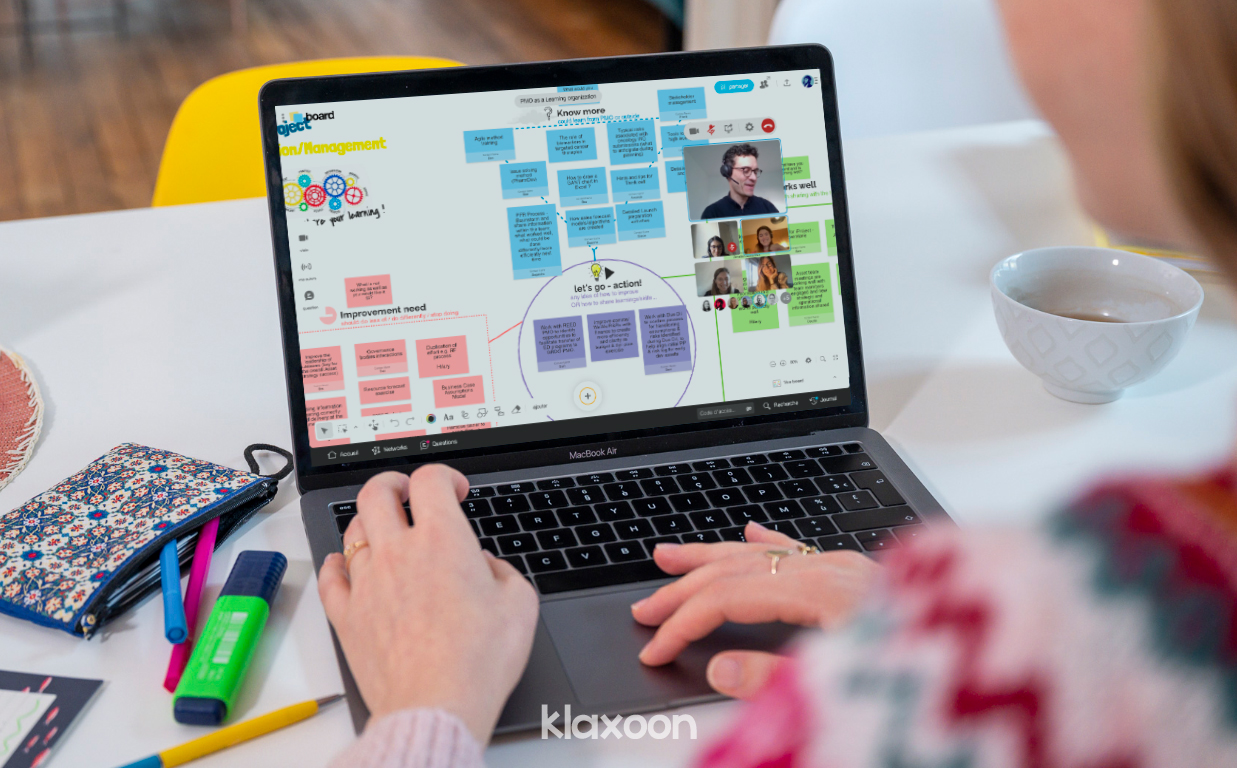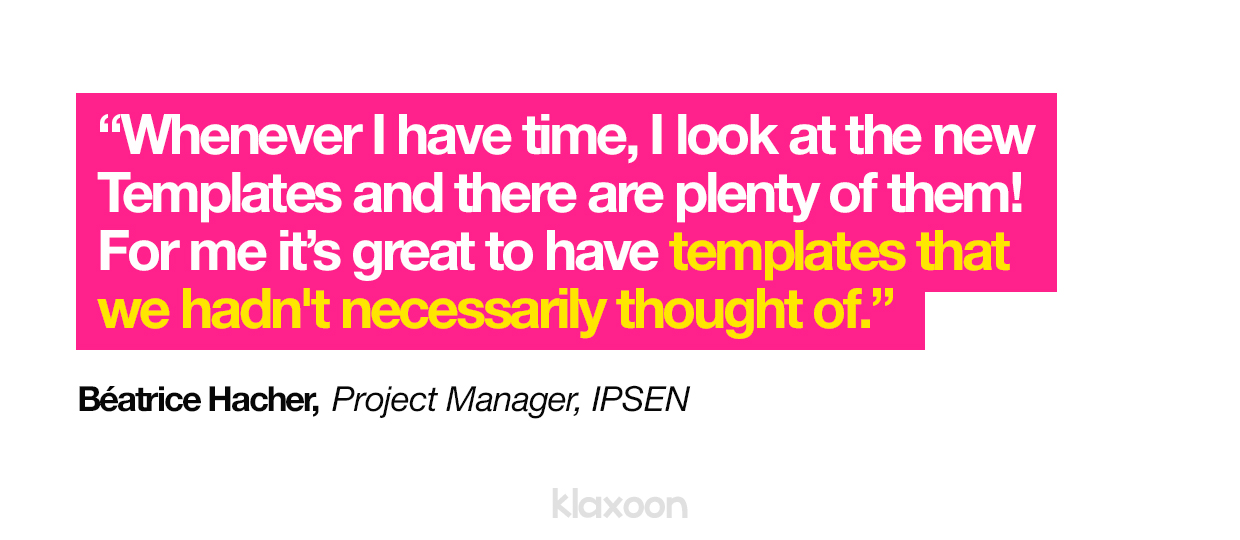How to facilitate a monthly continuous improvement workshop, remotely
Published on February 14, 2025
How to facilitate a monthly continuous improvement workshop, remotely

Project Manager at IPSEN
Béatrice Hacher is a project manager at the French biopharmaceutical company IPSEN. This mid-sized world leader specializes in transformative medicines in oncology, rare diseases and neuroscience. As well as being involved in drug discovery, Béatrice also works on continuous improvement projects. As such, she regularly conducts meetings and workshops, including a monthly knowledge management workshop, attended by around 20 people. As she held more of these recurring events, the need for an interactive tool became absolutely essential. So, to revolutionize her meetings, Béatrice turned to Klaxoon!
Béatrice normally uses a traditional flip chart, writing on an erasable whiteboard and/or using Post-it® notes. A meeting model that rarely finds volunteers in the vital but time-consuming summing up phase, since all the information has to be entered electronically afterwards!
And for Béatrice, other issues arise during this type of meeting, because the participants are spread over two different sites:
Faced with these problems, Béatrice wanted to find an interactive solution that would be more convenient and effective when facilitating her meetings. This is how she came across Klaxoon and facilitated her first workshop in February 2019, during which she immediately noticed how much easier it was to hold participants’ attention. But that's not all...
Every month, Béatrice brings together 20 team managers, for a 1.5 hour knowledge management workshop. It usually takes place remotely, using Board, Klaxoon's digital whiteboard, which includes an integrated video conferencing tool. Its limitless communication space can be used to share all kinds of information: text, images, videos, documents (PDF, PowerPoint, Excel etc.) or links to web pages. First of all, Béatrice conducts an ideation session with all the participants, followed by an in-depth analysis phase with a few volunteers.


Board's visual features help the team to work effectively, even remotely
As an introduction, Béatrice opens the workshop by discussing and raising awareness about the ongoing topic. Then, she invites each manager to share their thoughts on:
Participants share their ideas in the dedicated spaces that Béatrice has created on the Board. The layout instantly takes shape, especially since each topic for discussion is color-coded.
To optimize the time for each participant, only 5 to 6 volunteer managers stay for this second phase of Béatrice’s workshop. This phase initially consists of removing duplicates and splitting ideas into two categories: the good practices, and the actions to be taken to guarantee improvement.
Once this is completed, the team fleshes out each idea generated with the group in one of these categories.
To analyze each suggested good practice, the group attempts to answer several questions. “What are we doing? How do we share it? Who is it for? When might it be useful?”
Here, the group discusses the action plan to be implemented, which raises questions about the resources required and the completion deadline. To prioritize the implementation of these actions, Béatrice added a reflection matrix to the Board:
With this matrix, the group can visualize the priority actions instantly.
With Klaxoon Board, Béatrice found the perfect answer to her search for an interactive tool to facilitate her meetings:
Given these results, using Board has become a daily reflex for Béatrice. Indeed, she explains that she regularly browses the Templates library to get inspiration from hundreds of ready-to-use methods.


Unlock your teamwork potential